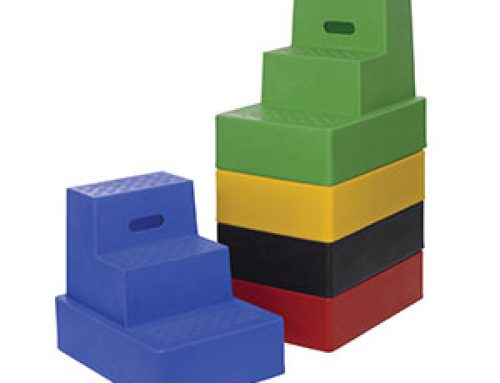The ladder is an everyday object that we take for granted. The simple construction serves its purpose and has remained largely unchanged since ladders were first used several thousand years ago. No one really knows where or when the first ladder was built and used, but one of the earliest recordings of a ladder exists in a rock painting from the Mesolithic era (10,000 years ago) in Spain. The painting depicts two people using a long ladder, which appears to be made from plant fibres, to reach a wild bee nest in order to harvest the honey. That long ago, wild honey was the only source of sweetness in the human diet, as bees had not become domesticated and sugar cane was also not cultivated. It is not hard to imagine that some ladders were first developed in order to harvest honey, as this is still practiced in remote tribes (some using ladders created by fixing rungs directly into a tree trunk). Humans would have been used to accessing high places under their own power, but the use of climbing aids, such as poles and branches, would have made this easier. The ladder could well have been developed to provide access in situations where there was no natural climbing provision.
Prehistoric Man and Ladders
Prehistoric human existence that long ago was very different to how we live now; there were no tall buildings, not much requirement to climb heights independently (i.e. without the use of a tree or natural structures) so the ladder, as a development, would have revolutionised the way people lived. It would have been like the development of paper-thin tv screens today. With their new-found ability to climb heights and access places that would have been otherwise out of reach, humans could access caves in high rock faces, scale cliffs and create more ambitious and practical dwellings. The modern ladder is thought to have been created in the middle east and northern Africa by Hebrew and Egyptian peoples and would have been an intrinsic tool in the building of the pyramids and other Ancient Egyptian structures. The origin of the word is thought to come from the old Gothic word hleithra, meaning ‘lean’ or something that slopes, and in Middle English was called ‘laddre’, very similar to the word we use today.
Ladders Through The Ages
Ladder construction developed through the ages. The first step ladder was invented by John H Balsley in 1862, with portability and storage among the things that influenced his design. The hinged A-frame design was intended for portability, easy storage and the ability to use the ladder as a freestanding piece of equipment. New materials and manufacturing processes influenced the development of the ladder structure into what we use today. As wood-working and rope manufacture became more sophisticated, these materials were used to construct ladders, and the widespread use of metal as a construction material led to metal ladders. The introduction of rubber meant that non-slip feet could be added to ladders, and almost every new development in construction and engineering has been applied to ladders since. The need to access ever more tricky and high up places has led to the development of specialist access equipment and we can see that the ladder is undoubtedly one of the pieces of equipment most heavily influenced by mankind’s needs, in both original design and subsequent development.






Leave A Comment
You must be logged in to post a comment.